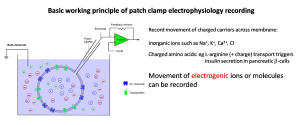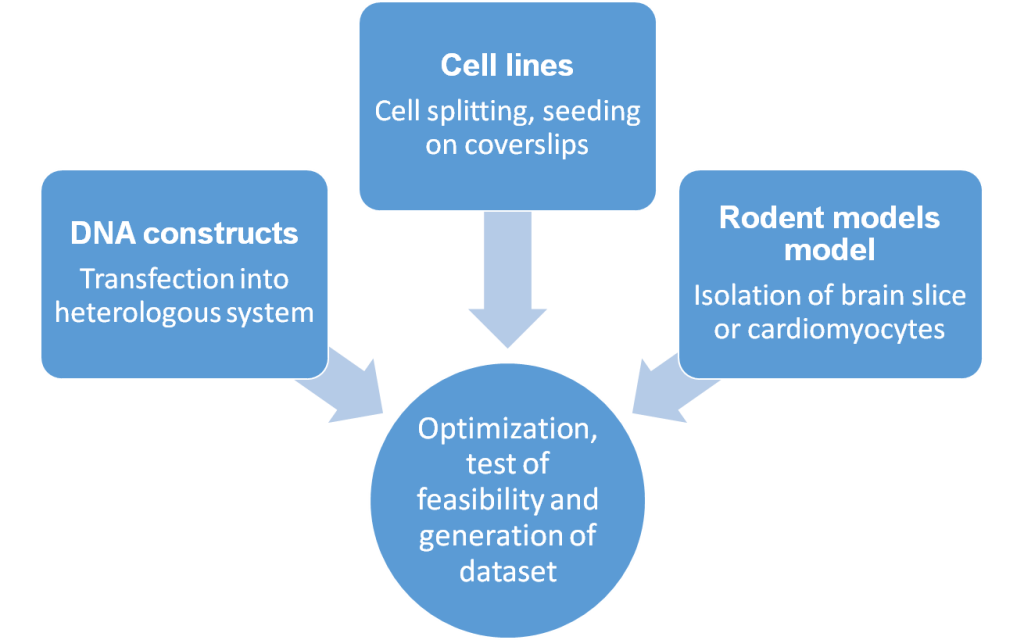Electrophysiology
Brief History
The Electrophysiology Core@NUS Medicine was established in 2018. Over the years the core has accumulated extensive experience in (1) characterizing disease associated ion channel mutations (2) screening of novel modulators of ion channels (3) characterizing primary or hIPSC-derived neurons or cardiomyocytes. (4) performing patch clamp recording from acutely isolated brain slice (5) recording end-plate potential in neuromuscular junction from acutely isolated phrenic nerve-diaphragm preparation (6) performing whole endolysosomal recording. We have worked closely with researchers in NUS/NUHS and beyond NUS, the core has been engaged by DSO National Laboratories (DSO), A*STAR, NTU, SGH and various industrial partners. The core has supported high-impact publications in journals such as Nature Communications, Hypertension, PNAS, Cell Research and etc.
Mission
The primary objective of the NUS Medicine Electrophysiology Core is to provide a service and expertise to researchers who plan to conduct experiments requiring electrophysiological techniques, such as patch-clamp electrophysiology, for functional or physiological studies.
What is patch-clamp electrophysiology?
Patch-clamp electrophysiology is the study of electrical activity across biological membrane such as plasma, mitochondria and lysosomal membrane. Movement of ions across the membrane, can in principle be monitored via recordings as current or potential change. To perform whole cell patch-clamp, a micropipette is tightly sealed on the cell membrane forming high resistance gigaseal. This small patch of membrane could then be ruptured with more intense suction to allow for electrode electrical access to the interior of the whole cell. Voltage stimulus is subsequently applied to elicit membrane current. . Alternatively, change in membrane potential, for example action potential which is an important feature of excitable cells such as neurons or muscle fibers could also be recorded

Workflow of Electrophysiology core:


